PENGUIN

CLASSICS
ANCIENT RHETORIC
FROM ARISTOTLE TO PHILOSTRATUS
THOMAS HABINEK is Professor of Classics at the University of Southern California. He has published extensively on Roman literature and culture, Greek and Roman rhetoric, and the afterlife of classical thought. His books include The Politics of Latin Literature (1998), The World of Roman Song (2005), Ancient Rhetoric and Oratory (2005), and Cicero: On Living and Dying Well (2011).
Translated and Edited by
Thomas Habinek
ANCIENT RHETORIC
From Aristotle to Philostratus
PENGUIN CLASSICS
UK | USA | Canada | Ireland | Australia
India | New Zealand | South Africa
Penguin Books is part of the Penguin Random House group of companies whose addresses can be found at global.penguinrandomhouse.com.
This edition first published in Penguin Classics 2017
Translation and editorial material Thomas Habinek, 2017
All rights reserved
The moral right of the editor has been asserted
Cover: Rhetoric from The Sciences by Etienne Delaune, France. 16th Century akg-images/Liszt Collection
ISBN: 978-0-141-39265-3
Chronology
427 BCE Gorgias arrives in Athens and inaugurates formal instruction in rhetoric
340335 Aristotle, Rhetoric
Dramatic date of Cicero, On the Orator
Roman conquest of Athens, relocation of many Greek intellectuals to Rome
80s Anonymous, Rhetoric to Herennius
Cicero, On Invention
Cicero, On the Orator
Cicero, Brutus
Assassination of Julius Caesar in Rome
Conventional date for commencement of the Roman Principate under Augustus Caesar
30s CE Seneca the Elder, Suasoriae and Controversiae
Emperor Vespasian establishes first endowed chair of rhetoric at Rome, recognizing importance of rhetorical instruction throughout the Roman Empire
Quintilian, Oratorical Instruction
230s Philostratus, Lives of the Sophists
Libanius appointed to chair of rhetoric in Antioch; rhetoric continues to be taught to pagan and Christian students alike
Introduction
Classical rhetoric is one of the earliest and best-attested versions of what is today sometimes referred to as media studies. Although the ancient rhetoricians were chiefly concerned with the production and analysis of public oratory, whether in the courtroom, in the legislature or on ceremonial occasions, the techniques they developed were considered applicable to virtually all communicative systems, including the visual and plastic arts, music, writing and scientific discourse. According to the two most influential definitions from antiquity, rhetoric was either the art of finding in any given context the most effective means of persuasion or the art of speaking well, with well implying the moral, logical, pragmatic and aesthetic aspects of communication. Rhetoric considered and fostered the interplay between artist, audience and message in specific contexts.
Rhetoric came into being as a technical discourse due to the high value placed on oral communication, persuasion and deliberation in the emerging city-states of the ancient Mediterranean world. New frameworks for collective decision-making, as well as the of formal legal procedures for violent conflict resolution, required participants who could clearly articulate issues for others and move members of an audience to decisive action, even when their individual or family well-being was not at stake. In addition, the expansion of political and cultural communities beyond kinship networks, and the persistence of such communities over time, required the articulation of unifying ideals and cultural memories through formal procedures of praise, blame and recollection, responsibility for which gradually passed from priests and poets to orators and statesmen.
and ceremonial audiences. The teachers of rhetoric thus created a kind of feedback loop whereby the more effectively they taught, the greater the need for their continued instruction. As a result, the production of guidebooks for students of rhetoric took on something of a life of its own, starting (probably) in the late fifth century BCE and continuing through and beyond the end of classical antiquity. No two handbooks of rhetoric contained exactly the same set of guidelines, as writers sought to differentiate themselves from their rivals and predecessors without straying too far from standard topics and approaches.
The present volume attempts to recreate an idealized version of classical rhetoric through direct quotation of the leading ancient authors on the subject without giving pride of place to any one text or approach. Treatises translated here include works originally written in Greek as well as Latin, dating from the fourth century BCE to the third century CE. The reader will note occasional differences in definitions of terms or handling of topics between one author and another. Inclusion of such variation is intentional, as it conveys a sense of the fluid and sometimes nature of rhetorical instruction. The works presented here also vary in historical context and in the type of oratory they refer to, from the deliberative speeches of the Athenian democracy, to the judicial orations that played a key role in the political and legal system of the Roman Republic, to the display speeches of the so-called sophists who travelled from city to city during the heyday of the Roman Empire. The adaptability of classical rhetoric to changing political and social circumstances in the ancient world anticipates its continued revival and reuse in the centuries after the end of antiquity.
The selections translated in this volume are organized not in chronological order of composition, but according to the logic of instruction that characterized ancient training in rhetoric: first, an exhortation to the study of the field, followed by a set but have proven to be of interest to subsequent students. These include a brief section on the underlying model of human cognition that informs a great deal of rhetorical teaching, especially on the part of Roman authors; a lengthier section on the theory and practice of ornamentation, or the reworking of the raw material of language to make it more impressive (a subject of great interest to theorists of other arts besides public speaking); and a set of readings that illustrate the lived experience of the ancient orator from childhood education, through a career in the forum and beyond. Indeed, one of the most compelling reasons for studying classical rhetoric is the insight it provides into the daily lives and social interactions of the educated citizens of ancient communities. Although at times it must have seemed like an austere or forbidding subject, rhetoric was the lifeblood of ancient politics, law and administration, a shared discourse that enabled communication across boundaries of ethnicity, status and ideology. The rhetoricians and orators presented in this volume include political outsiders who rose to high office, distinguished professors and anonymous schoolteachers, natives of mainland Greece and Italy as well as Gaul (modern France), Spain, Asia Minor (modern Turkey) and Rhodes. A larger volume could easily have included material from North Africa, Syria and Britain.




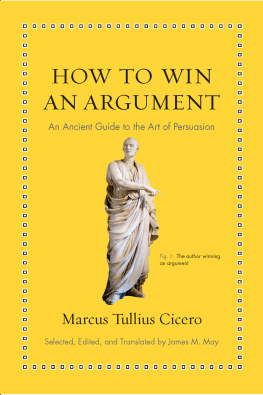
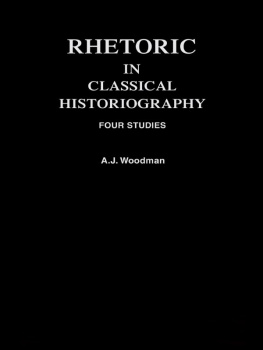
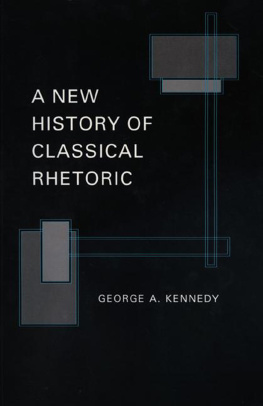
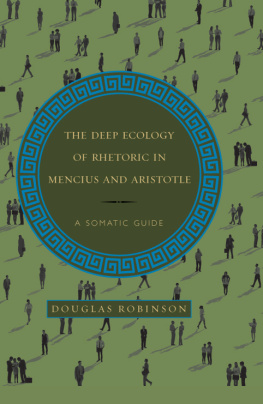
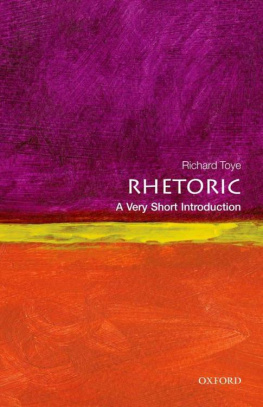
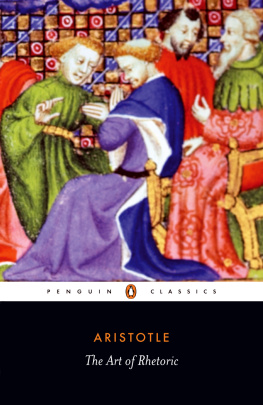
 CLASSICS
CLASSICS
